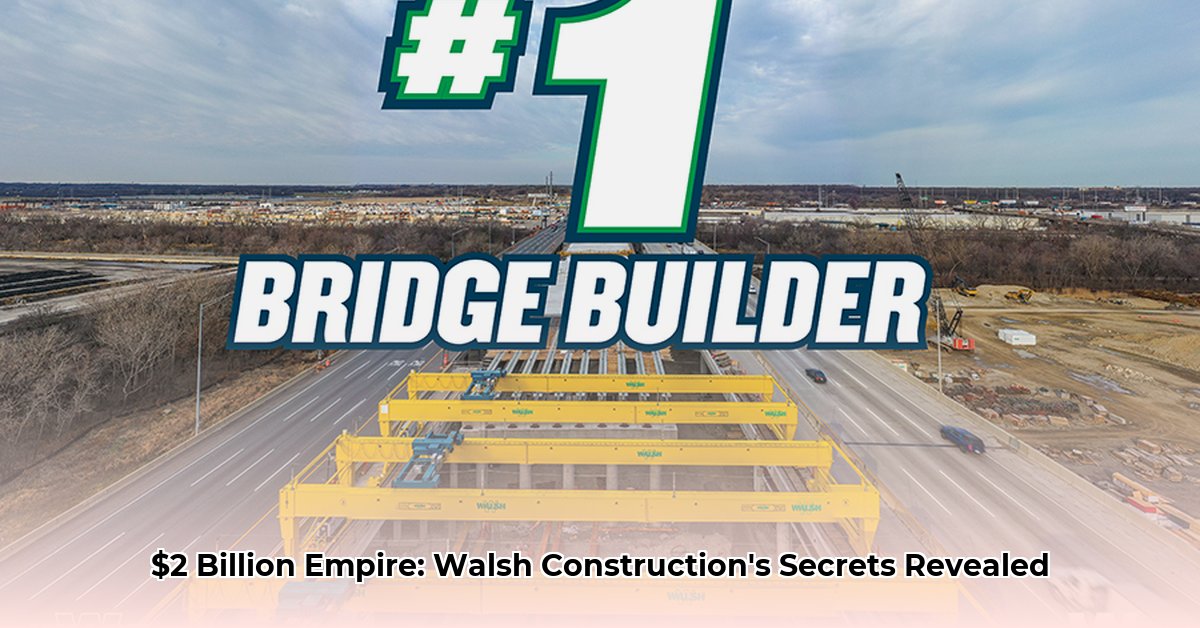
Walsh Construction's $2 Billion Ascent: A Century of Building Success
The Walsh Group: a name synonymous with Chicago's iconic skyline and a legacy spanning over a century. This family-owned construction giant boasts a reported net worth of $2 billion, a testament to strategic planning, generational leadership, and a keen understanding of the construction industry's ever-shifting landscape. But how did a small, family-run operation, founded in 1898 Chicago, transform into a multi-billion dollar empire? This article explores the secrets behind the Walsh brothers' success, the risks they’ve navigated, and the challenges that lie ahead. It’s a story of calculated risk-taking, strategic acquisitions, and the enduring power of family legacy in the cutthroat world of construction.
Did you know that the Walsh Group's story began nearly 125 years ago, a period encompassing significant economic booms and devastating recessions? This longevity alone speaks volumes about their adaptability and resilience. The sheer scale of their growth—from a small firm to a $2 billion powerhouse—is remarkable and warrants a closer look at their strategies.
From Humble Beginnings to a Construction Dynasty: A Legacy in the Making
The Walsh Group's journey began modestly in 1898 Chicago. Under the leadership of current brothers Matt and Dan Walsh, the company's growth reflects more than just luck; it's a testament to shrewd decision-making and strategic foresight. Their ability to navigate the cyclical nature of the construction industry, weathering economic downturns while capitalizing on periods of growth, is a key component of their success. How did they manage to consistently outperform their competitors over such an extended period? The answer lies in a blend of strategic acquisitions, diversification, and a strong family-centric business approach.
Strategic Acquisitions and Diversification: Expanding the Empire
The Walsh Group's growth wasn't solely organic. Strategic acquisitions, such as Archer Western and R&L Brosamer, significantly expanded their capabilities and market reach. These weren’t impulsive moves; they were calculated expansions designed to diversify their portfolio and mitigate the inherent risks associated with relying on a single market sector. By diversifying into various construction specializations, from infrastructure projects to highly specialized builds, the Walsh Group significantly reduced its vulnerability to economic downturns. This risk-mitigation strategy is a significant contributor to their impressive net worth.
The Family Factor: A Double-Edged Sword
Being a family business presents both advantages and challenges. The close-knit structure fosters a strong sense of shared responsibility and a long-term vision. This unity promotes a cohesive business identity and a steadfast commitment to the company's longevity. However, maintaining this family-run structure while operating on such a large scale requires careful management of internal dynamics. Succession planning, a critical concern for any family business, is paramount to ensuring the continuity of the Walsh Group's success and preserving its substantial net worth. Any potential for internal conflict must be skillfully navigated to maintain the company’s unity and forward momentum.
The Challenges of Limited Public Information
One significant hurdle in fully analyzing the Walsh Group's financial standing is the limited public availability of detailed financial statements. While a $2 billion net worth is widely cited, the precise details regarding their market share, profitability, and overall financial health remain largely undisclosed. This lack of transparency necessitates reliance on estimations and industry analyses for a comprehensive understanding of their financial positioning.
Navigating the Risks: The Construction Industry’s Volatile Landscape
The construction industry is inherently volatile, subject to economic fluctuations and intense competition. The Walsh Group's success hinges on a proactive approach to risk management. Key risks include economic downturns, fierce competition, and the complexities of succession planning. Their mitigation strategies, including diversification and financial reserves, are crucial in maintaining their financial stability.
The Future of the Walsh Group: Maintaining a Legacy
The Walsh brothers now face the challenge of leading the company into the next phase of its evolution. To maintain their impressive net worth and ensure the Walsh Group's continued success, they must adapt to the changing industry landscape. This requires ongoing innovation, strategic planning, and a proactive approach to the inherent risks associated with the construction industry. Their ability to successfully manage succession planning and maintain a unified family approach will be essential in navigating future uncertainties and perpetuating the legacy they have carefully built over the last century.